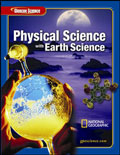1 A) Matthews B) Vine C) Wegener D) Wilson 2 A) The theories are the same, only one is more recent. B) The continental drift theory accounts for crystal formation. C) Plate tectonics provides a realistic mechanism by which crustal material is formed, moved, and recycled. D) The theory of plate tectonics discounts the use of fossil evidence. 3 A) matching of continental margins B) matching magnetic patterns symmetrical to the mid-ocean ridge C) correlation of fossils among the continents D) mountain-range matching among the continents 4 A) mid-ocean ridge B) mountain range C) rift valley D) oceanic crust 5 A) Convergent, Divergent, and Sliding B) Convergent, Developing, and Transform C) Conclusive, Divergent, and Transform D) Convergent, Divergent, and Transform 6 A) epicenter B) viscosity C) focus D) aftershock 7 A) focus B) epicenter C) volcano D) fault 8 A) secondary waves B) primary waves C) surface waves D) body waves 9 A) primary waves B) surface waves C) secondary waves D) body waves 10 A) At many divergent boundaries, subduction occurs. B) At many convergent boundaries, subducton occurs. C) The crust at plate boundaries is brittle and weak. D) At many convergent boundaries, subduction occurs. 11 A) discontinuity B) transform boundary C) divergent boundary D) convergent boundary 12 A) lithosphere B) upper mantle C) lower mantle D) asthenosphere 13 A) dark B) dense C) shadow D) wave 14 A) liquid B) solid C) gaseous D) silicate 15 A) It is impossible to speculate the core's composition B) Iron and Nickel are the most abundant elements on the Earth C) The densest materials settled toward the core. D) Iron and Nickel are only stable under high temperature pressure environments. 16 A) Hawaiian volcano B) composite volcano C) shield volcano D) cinder cone volcano 17 A) sticky, silica-rich magmas B) great height compared to width C) forms above hot spots D) found mostly on continents 18 A) Pyrocastic B) Viscosity C) Density D) Weight 19 A) As oceanic crust subducts, it begins to melt which eats through continental crust and creates volcanoes on the surface. B) Subduction zones are prone to hot spot development. C) Subduction zones occur along divergent boundaries where magma is released to the surface. D) Plate boundaries are very weak and full of cracks that magma moves through to reach the surface. 20 A) magma B) lava C) ash D) volcanic bombs





